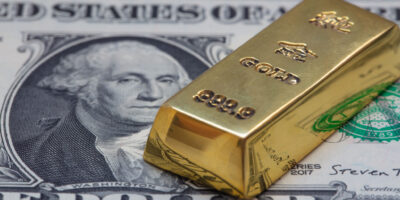Monetary Cosmopolitanism: The International Gold Standard
As I have argued in my last three posts, there has always been a tension between money as an instrument of social cooperation and money as an instrument of social control. In any era, cooperation or control may have been ascendant; never was there anything like a universal victory. But a relative high point—at least for those who think money should be preserved from political domination—prevailed from the late 19th century until the First World War. The monetary system that existed during this time period is known as the international gold standard. It is one of the strongest examples for the view that monetary cosmopolitanism promotes widespread peace and prosperity.
Under the international gold standard, the currencies of various countries were defined in terms of gold. That is, a certain amount of gold comprised the unit of account and gold itself was the money-commodity (whether in coin or bullion form) for which the banking system’s ‘inside money’ (notes, demand deposits, etc.) were redeemable. With national currencies defined in terms of gold, and with relatively few impediments on the flow of goods and capital across national borders, what the nations of Western Europe and the United States had was essentially a single monetary system. If both the dollar and the pound are defined in terms of gold, then prices in the US and the UK, although expressed in their respective national currencies, actually share a common underlying exchange ratio in terms of the implicit gold-price for goods and services.
The latter part of the 19th century was a period of impressive economic growth for the nations that participated in the international gold standard. Obviously, not all of this was because of the gold standard. But it is hard to imagine technological and industrial change advancing as fast as it did without a stable foundation for the monetary system. After all, developing industry and discovering new technologies are tasks that have an inherent economic element: resources have to be allocated towards these tasks, which means tradeoffs have to be made about the relative value of the prospective activities. Well-developed markets, themselves made stronger by a stable monetary system, made it easier for industrialists and technologists to make the necessary exchanges to acquire the inputs they needed. This story had an international element, too. The flow of goods and capital across national boundaries, rendered relatively low cost due to the de facto single monetary standard, integrated markets and strengthened commercial ties. It thus increased the extent of the market and, as a consequence, the degree of sustainable specialization.
The era of monetary cosmopolitanism coincided with the high tide of liberalism in political matters. For the first time, the consensus was that open markets and free commerce ought to be the default state of affairs, which the political system interfered with only in the case of pressing public need to correct general problems. It would be an exaggeration to romanticize this as a paradise of pure laissez-faire. Political graft still existed. Imperialist ambitions spurred the Western nations to unjustifiable conquests. The status of women and minorities, both in the eyes of the law and civil society, was far below that enjoyed today. But it nonetheless remains true that, for a brief period, liberalism had captured the Western imagination and found itself instantiated in the dealings between Western nations.
The ability of politics to dominate the monetary system during this era was limited. Since the monetary system was international, no domestic political force could truly control it. That didn’t stop governments from trying, of course. The series of bank runs and financial panics that the US experienced between the end of the Civil War and the beginning of the First World War were chiefly due to institutional fragilities with the US banking system that stemmed from the government’s desire to use the banking system to satisfy its fiscal needs. But the degree of international market integration, then at a historical high, meant that this meddling could only go so far. For the most part, money fulfilled its promise as a vehicle for promoting peace and commerce between nations.
But monetary cosmopolitanism would be dealt a severe blow with the advent of the First World War. The subordination of domestic economies to wartime conditions and goals was the death knell of liberal international commercialism. Monetary cosmopolitanism was collateral damage. Although the form and function of monetary institutions would change significantly from the end of the First World War, then the Second World War, and throughout the rest of the 20th century as well, monetary freedom never quite recovered. Clearly we are better off in many, many other ways compared to the era of the international gold standard. But monetary freedom is not one of those ways. There are good reasons to suspect we would be better off still if the forces of social control had not gained and maintained the upper hand.











